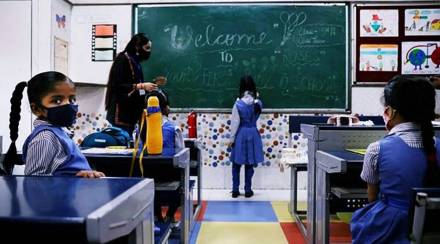The pandemic resulted in several radical changes in our daily lives and upended the world as we knew it. But there was one segment of the population that was particularly affected – school-going children. With the schools shutting down, they had to adapt to a completely new way of teaching. Many felt out of place without their peers and had to deal with the perils of online teaching. However, just when they were adjusting to “this new normal”, and with the drop in the number of new cases, schools reopened. Needless to say, parents were thrilled with this, but going back to school has come with its own set of challenges for the children. FinancialExpress.com got in touch with Neha Jain, Author at Merlinwand to know some of the challenges that school-going kids face today and how they can cross that bridge. Here’s what she told us:
Lack of engagement and socialising
The lockdown, in its various forms, extended for a period of almost two years. Children, especially those below the age of 10, got used to the idea of staying at home and making a few friends in and around their neighbourhoods. As a result, Since schools reopened, children still feel uncomfortable in the classroom setting and are reluctant to talk to their erstwhile/new classmates.
Suppressed immunity
For many of these children, the pandemic time was a period of prolonged stress and anxiety, the remnants of which continue to be visible today. An especially salient effect of stress is on the immunity of these children. They are falling ill more often and missing school and classes. In addition, after a long period of staying indoors, exposure to the sun and physical exertion are also impacting their health and temperament.
Also Read | The long lasting impact of Covid-19; how the pandemic has delayed academic progress of students
Logistical inconsistencies
Numerous schools, driven by the desire to earn more profits, took in more admissions than their infrastructure could support. So, as schools reopened, they were struggling to accommodate children. Functioning in a hybrid model has provided some respite, although, the struggle for space remains an issue. The impact of this has been felt on the quality of the education provided to children.
Adjusting to structure
For many children, online classes meant studying in a relatively relaxed structure in the presence of loved ones. They didn’t necessarily have to follow a strict schedule, and this is hence leading to problems in adjustment when they are required to adhere to a rigid timetable. Many students are feeling confused and are retaliating with aggression.
Separation anxiety
Younger children especially, when confronted with the prospect of staying away from their parents for long periods, triggered (or in some cases re-triggered) separation anxiety. In such a scenario, children may demonstrate excessive clinginess, irritability and crying when in school, and aggression towards teachers or parents upon returning home.
Trouble adjusting to assessment patterns
Assessments have primarily been conducted online for these children. Online exams brought a certain level of self-assurance and comfort. Thus children may respond with excessive anxiety when exposed to giving exams in the traditional way with contemporaries.
Also Read | Working Executives can now enhance their CV through brand IIM; Here’s how
All these issues may not just be at the level of minor inconveniences. They may lead to serious behavioural problems and mental health complications in children. Schools, therefore, need to be better aware of these concerns. Screening for covert anxiety and depression is vital. This can be done on a large scale through screening instruments (Beck Depression Inventory, Beck anxiety inventory, Children’s Behaviour Checklist). Those scoring high on these scales can be offered professional help or sessions with the school counsellor. Training workshops or educational seminars can be held for parents to identify and deal with these problems. Children can get ready to go back to school gradually; they simply need to be reintroduced to those patterns and habits to make it easier for them.
